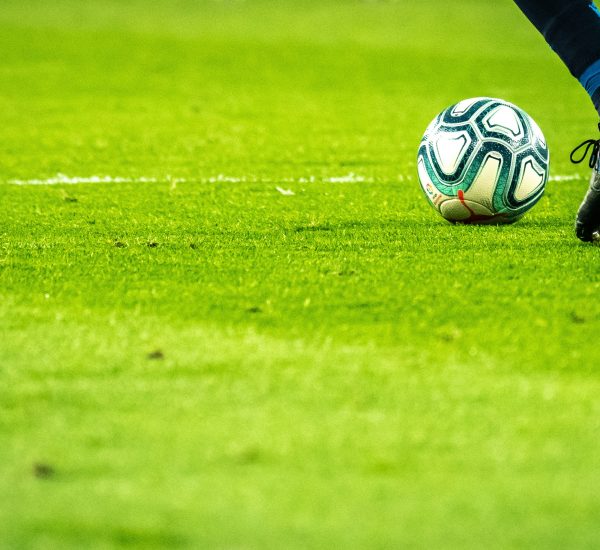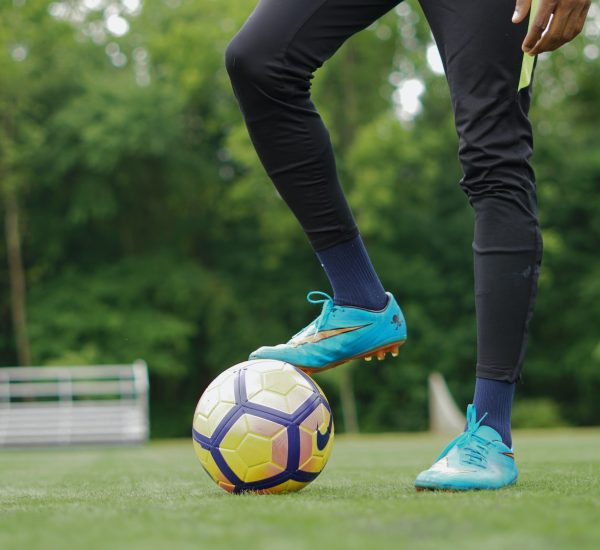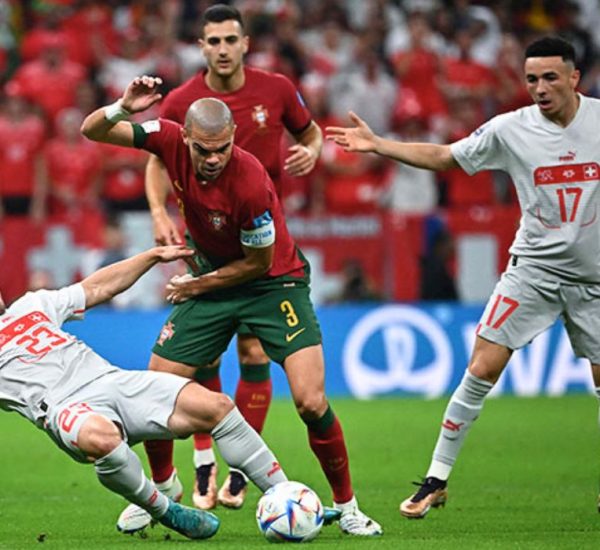To have a complete understanding of soccer, one must know the ins and outs of the game. And what’s a better way to learn about the game than by learning about the soccer field?
While there are many things to learn regarding the soccer pitch, the first question that comes to our mind is how big is a soccer field?
According to the IFAB, the international soccer governing body, a soccer field must be between 90 and 120 meters long and between 45 and 90 meters wide. Additionally, soccer fields must be rectangular and have a goal at each end of the field.
In this blog post, we will discuss the size and dimensions of a soccer field. We will also take a look at some international standards that are in place for soccer fields. So whether you’re an avid soccer fan or just starting to learn about the sport, this blog post is for you!
Soccer Field Size and Dimension
As mentioned earlier, soccer fields can be 90 to 120 meters long (100 – 130 yards long). The width should be between 45 and 90 meters wide (50 – 100 yards wide) to meet the International Football Association Board (IFAB) standards.
The length and width of the field are not the only dimensions that FIFA regulates. For example, the height of the goal is 24 feet wide (7.32 m) and 8 feet tall (2.44 m).
For international soccer matches, the requirements for the soccer field dimension are different. The length (touchline) of the soccer field should be between 100 meters (110 yards) and 110 meters (120 yards). The width (goal line) of the soccer pitch should be between 64 meters (70 yards) and 75 meters (80 yards).
Next, we will look at the soccer field markings and lines. These are essential features of a soccer pitch.

Soccer Lines and Markings
Soccer lines are a critical part of the soccer game. Without them, it would be complicated to play soccer.
In addition to the dimensions we discussed earlier, the IFAB also regulates the lines and markings on a soccer field.
As per the IFAB, essential markings must be present on a soccer field. The different soccer lines are referred to as:
- Halfway line
- Center circle
- Center mark
- Penalty area
- Penalty mark
- Penalty arc
- Corner area
- Goal area
- Goal-line
- Touchline
Halfway Line in Soccer
The halfway line is a vital part of the game of soccer. It marks the center of the field and divides the soccer pitch into two. All the lines on the soccer field must be of the same width, 12cm (5 ins).
Center Circle in Soccer
The center circle is the position on a soccer field where players kick off the soccer match. The size of the center circle is ten yards from the center mark or the center spot.
Center Mark in Soccer
The center mark in soccer is an essential part of the game. It is located in the center of the soccer field. Also known as the center spot, the center mark is where the ball is placed during the kick-off.
Penalty Area in Soccer
The goal line is connected to two other lines drawn at right angles. The length of each line is 16,5m (or simply 18 yards). Next, these two lines are joined by another line parallel to the goal line. The region found within this area is known as the penalty area.
The penalty area is an integral part of the soccer field. It’s also known as the “D” or “18-yard box.” A line from each corner marks the rectangular area in front of the goal.
If a player commits a foul inside the penalty arc, they are booked based on the severity of the offense, and the other team is awarded a penalty kick. Conversely, a free kick is awarded if a player commits a foul outside the penalty arc.
Penalty Mark in Soccer
The penalty mark (or the penalty spot) is the location within the penalty area where players place the ball during penalty kicks. The penalty mark is at 11m (12 yards) from the goal line. The penalty mark is usually a circular white spot on the soccer field.
Penalty Arc in Soccer
The semi-circular shape that connects with the penalty area is the penalty arc.
Corner area in Soccer
A quarter-circle represents the corner area. The quarter-circle has a radius of 1m (1 yard) from each corner flagpost.
The corner area in soccer is an essential part of the game. Players can take corner kicks, which can be a powerful way to score a goal. The corner area is also an excellent place to send in crosses, passes from one player to another that goes across the field.
Players in the corner area can also score goals by heading the ball into the net.
Goal Area in Soccer
Two 5,5m (6 yards) lines join the goal line at right angles. These two lines then connect with another line parallel to the goal line. The area formed within that perimeter is the goal area in soccer.
Goal-line in Soccer
The goal line in soccer is the end of the field where the goals are located. The game’s object is to score more goals than the opposing team. A goal is scored when the ball crosses the goal line between the two posts and under the crossbar.
The defending team tries to prevent the opposing team from scoring by preventing them from getting the ball past the goal line.
Several rules apply to offenses and defenses near the goal line, such as offsides and handball. Violations can result in a penalty kick for the opposing team.
The length of the goal is a minimum of 45m (50 yards) and a maximum of 90m (100 yards). The minimum is 64m (70 yards) during international fixtures, and the maximum is 75m (80 yards).
Touchline in Soccer
The touchline in soccer is the sideline of the field. It indicates where the soccer ball goes out of play during soccer games.
The touchline is used to restart the play after it has been stopped. For example, play is restarted with a throw-in if the ball goes out of bounds. The player who takes the throw-in must do so from the touchline. If they cross over into the field of play, their throw-in will be considered invalid and is awarded to the opposition team.
The touchline is longer than the goal line. The length of the touchline is a minimum of 90m (100 yards) and a maximum of 120m (130 yards).
Touchline length varies based on soccer competition. For example, during international soccer matches, the length of the touchline will be different.
During international games, the touchline will be a minimum of 100m (110 yards) long and a maximum of 110m (120 yards).
Flagpost in Soccer
The height of a flagpost for soccer matches is at least 1,5m (5 feet). The top of the flagpost must be non-pointed to avoid any form of accident or injury during soccer games. The flagpost comes with a flag placed at each corner, that is, four flagposts in total.
Flagposts can also be placed at each end of the halfway line. It should have a distance of at least 1m (1 yard) outside the touchline.
The Technical Area in Soccer
The technical area is where soccer managers stand to instruct players during the games. It is located between the touchline and the substitution bench.
A soccer coach is not allowed to enter the technical area of an opponent during the match. Such offense will result in a booking or suspension from the soccer pitch.
Here are a few crucial things that you need to know regarding the technical area:
- The technical area is at least one meter (1 yard) from the touchline. Besides, it extends to one meter (1 yard) on one side of the seated area.
- The technical area is often seen as dotted markings of white color.
- The rules set by the IFAB will determine the number of people allowed within the technical area.
- Before the kick-off of a soccer game, people allowed to be in the technical area are designated.
- Anyone within the technical area should act responsibly.
- Managers or technical staff are not allowed to leave the technical area and move into the soccer ground without the referee’s permission.
- Only one person from the technical area can provide instructions to players during a live soccer game.
Surface of Soccer Fields
A soccer field is typically made up of grass, but there are variations. For example, some soccer pitches have an artificial surface made of rubber or plastic pellets. This surface is most common in indoor arenas and is becoming more popular for outdoor fields. The artificial surface provides a consistent playing field in all weather conditions.
The grass is the traditional surface for soccer and offers many benefits. For example, it helps soccer players see the ball better and provides a good surface for running and performing tackles without causing injuries.
IFAB, International Football Association Board
The IFAB is the International Football Association Board, and it was founded in 1886.
The role of the IFAB in soccer is to make decisions about the rules of the game. IFAB comprises four members: FIFA, The Football Association (FA), the Scottish FA, and the Irish FA.
IFAB makes decisions by voting, and FIFA has a casting vote if the other three members are deadlocked. IFAB is responsible for creating the Laws of the Game, which are soccer rules. IFAB also decides on changes to the Laws of the Game.
FIFA is the only member of IFAB that can change the Laws of the Game, but FIFA often defers to IFAB on changes. Changes to the Laws of the Game is approved by two-thirds of IFAB’s members.
IFAB meets four times a year to discuss changes to the Laws of the Game. IFAB is also responsible for the annual International Player’s Transfer Matching System (ITMS), which transfers players between clubs in different countries.
The IFAB is a vital organization in soccer, and it has a lot of authority when it comes to making decisions about the rules of the game.



